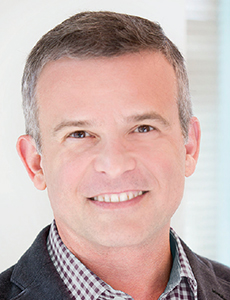Reduce Opioid Use and Speed Up Recovery by Treating Injured Workers Like Pro-Athletes

A cheering crowd in The Los Angeles Memorial Coliseum fell silent as Mary Lou Retton stepped up for her first vault during the 1984 Olympics. Eyes determined, Retton hesitated for a second before sprinting forward and completing her first vault.
Within seconds, she was soaring through the flip of her first vault. Commentators declared it was the best of her life.
She only needed one perfect 10 to win the Gold Medal. So, when she stepped up for her second vault, she was already beaming. Then she was flying through the air once more, scoring another perfect 10.
More remarkable than earning two perfect scores and becoming the first American female gymnast to win an Olympic Gold Medal, was the fact that Retton had been sidelined with a knee injury only five weeks earlier. Retton had been sitting cross-legged on the ground signing autographs after a gymnastics camp seminar and when she stood up, she found her left leg was locked at the knee.
“She went and told her coach, Bela Karolyi, who told her to ‘kick it, kick it,’ which was his way of saying ‘walk it off,’ ” said Michelle Despres, vice president and national product leader at One Call.
“She went to bed that night and woke up the next day, and her knee was swollen and she couldn’t walk at all.”
Her doctors determined that a piece of cartilage had broken off and lodged itself in Retton’s knee joint. Arthroscopic surgery was a must, and doctors thought it was unlikely that Retton would be able to compete at the 1984 Olympic Games in Los Angeles.
Retton, however, was determined to compete. She knew that she was the best shot the Americans had of bringing home a gold medal. With the help of her doctors and the support of her family and coaches, she completed six weeks of physical therapy in only two weeks.
“She went on five weeks later to the Olympics and had a perfect vault twice. She scored two perfect 10s,” Despres said.
For Despres, Retton’s story is one of a remarkable — but not unachievable — recovery. Elite athletes, while healthier than most, still have human bodies. Although their physical fitness may hasten their recovery somewhat, it is really the kind of treatment they receive that makes the difference.
When an athlete is injured, all of the focus is on restoring the function of the injured body part so that they can return to competition. Everyone in their lives — family members, coaches, doctors — rallies around that goal.
They make sure that not only the physical injury is being treated but also that the athlete is in the right mindset for recovery, and they help them avoid relying on addictive pain killers that may delay recovery.
“People will say, it’s an elite athlete so they may heal more efficiently. And I would argue, that’s true, but science doesn’t cease to exist in your body because you’re an elite athlete. There’s still a healing period,” Despres said. “As elite as anyone is, your body does not necessarily have the ability to overcome science and nature.”
All of which of course begs the question, if caring for an athlete by treating the physical, psychological and sociological factors that come with an injury speeds up their recovery process, couldn’t the same model work in workers’ compensation too?
At the virtual National Workers’ Compensation and Disability Conference, Despres and Dr. Marcos Iglesias, chief medical director and vice president at Travelers, will use Retton’s example to detail how treating injured workers like pro-athletes can help speed up recovery and reduce opioid use, especially when it comes to musculoskeletal injuries.
Their session, “Going For The Gold: From Injured Worker to Star Performer” will be held on October 21 from 2:00-3:00 p.m. Eastern Time.
Treating Injured Workers Like the Pro-Athletes They Are

Michelle Despres, vice president, national product leader, One Call
Treating injured workers like pro-athletes isn’t new in workers’ comp. Manual laborers have been called industrial athletes and some workers’ comp programs have adopted strategies to focus on their workers’ health in the same way that a coach would with an athlete.
While the idea has existed for some time, Iglesias and Despres plan to detail what the approach entails during their session.
One of the key distinctions they drew between the way workers’ comp injuries and pro-athlete injuries are treated is the emphasis on returning to function over removing pain.
Pro-athletes are expected, even pushed, to make a full recovery so that they can get back to their sport. As a result, their doctors, physical therapists and trainers focus on improving the function of their joints and muscles rather than treating their pain.
“It focuses on function as opposed to pain,” Iglesias said.
“Focusing on pain is not usually very helpful. But focusing on function is, because function really is something that is measurable. It’s objective.”
Injured workers, on the other hand, are often treated based on their pain levels. Doctors, physical therapists and other care providers ask about pain before they ask about other factors that could be affecting an injured employee’s healing process.
“Back in the day, we would say, when you walked into PT, Hey, what’s your pain today? Zero to 10, tell me your pain level,” Despres said. “When you focus on pain like that, then you set the expectation that a person should have pain.”
Instead of focusing on pain, Despres and Iglesias recommend treating injured workers like pro-athletes by asking them about their functionality. Providers should ask if they’re having an easier time lifting common household items, tying their shoes or completing other activities that could be inhibited by their injury.
“If we instead frame up function and don’t focus on the pain, the pain may not change, the pain may always be there, but if you’re doing more things functionally and you’re more successful at doing those things, then the pain starts to subside, and it’s less in the forefront of your mind,” Despres said.
Biopsychosocial Care Goes for The Gold
In addition to treatment that focuses on improving functionality, professional athletes are often surrounded by supportive communities who are all working to help them heal. Recalling the example of Retton, Despres noted how her whole community — coach, parents and doctors — supported her journey and helped her heal.
“She had a coach that was supportive and a family that was supportive and a medical community that was supportive,” Despres said.
In workers’ comp, the practice of involving every aspect of an injured worker’s life in their treatment is known as the biopsychosocial care model.
In biopsychosocial care, providers focus on treating the behavioral health and socioeconomic conditions that may be negatively affecting an injured worker’s recovery alongside the physical injury.
“It really involves putting the injured employee, the patient in charge of their recovery,” Iglesias said.
“Helping them to set goals, helping them to see how they’re progressing, getting them to be active — physically active, socially active, cognitively active.”
A worker who feels negatively about work, for example, may have a harder time recovering than someone who loves their job, even if they have the same injury. Similarly, an injured worker who is struggling financially may face a longer road to full-functionality due to the stress and anxiety they’re experiencing.
“If a person’s very motivated and they love their job and they’ve got a supportive family and all their friends are supportive and they’re looking forward to going back to work, they generally have a good outcome regardless of the diagnosis,” Despres said.
“If someone’s not happy with their work, they don’t really want to go back, if their family maybe is annoyed with them, and if that person maybe has depression or has some other things going on, all of that leads to a less optimal outcome. Same person, same injury, depending on what those biopsychosocial factors are, could have two very different end results.”
A Winning Strategy for Reducing Opioid Use

Marcos Iglesias, chief medical director, vice president, Travelers
By exploring how treating injured workers like pro-athletes shifts the focus away from pain, the session will also help workers’ compensation care providers learn how they can reduce opioid usage amongst injured workers.
Opioid use has been on the decline in workers’ comp — a recent WCRI report found that opioid spend has decreased from 20% to 9% on average in most states — but it can still be used as a clutch for patients who are experiencing pain, Iglesias noted, even though it may not be the best option.
“A lot of times we have looked at drug therapy, especially opioid therapy, as the best pain control for every problem and that’s just simply not the case,” Iglesias said. “We need to understand the injury, and we need to understand the pain that we’re dealing with because oftentimes we lump pain and injuries as one.”
Part of this is due to misunderstanding the nature of the pain an injured worker may be experiencing. Acute pain, like the pain an injured worker experiences after surgery, may go away over time on it’s own and thus may be best treated by a brief opioid prescription. Chronic pain, however, requires a different treatment approach.
“Are we trying to address pain that is acute or is it chronic?” Iglesias said. “The tools that may be very effective for treating acute pain are seldom effective in chronic pain and in fact, may be counterproductive.”
This dynamic is especially true of musculoskeletal disorder treatment. One of the most common work injuries, musculoskeletal disorders can lead to absenteeism and delayed return-to-work when opioids are prescribed early on in the claim, several studies have shown.
While more research is needed in this area, providers and prescribers should be concerned about the correlation between prolonged recovery and opioid use for injured workers with musculoskeletal disorders, especially when research shows there may be better treatments out there.
A WCRI study from this year found that for injured workers with low back pain — the most common musculoskeletal disorder — early physical therapy could help reduce costs and avoid opioid use.
Average claims payouts were 24% higher for patients who began PT 30 days post-injury than those who began 3 days after being hurt, the study found. On the opioid front, injured workers who began PT 30 or more days after their injury were 46-47% more likely to receive an opioid prescription.
“Physical therapy is one of the most known, most researched, best ways to avoid an opioid,” Despres said.
“Consider PT first and consider PT early with any musculoskeletal disorder versus medications and rest. Movement is key. So when somebody then does rest, problems start to creep in.” &
 National Comp will present a special free one-day event on October 21, followed by an ongoing digital session series that runs through next fall.
National Comp will present a special free one-day event on October 21, followed by an ongoing digital session series that runs through next fall.
The event will begin with an opening keynote, “The 5 Most Critical Challenges Facing Workers’ Comp in the COVID Era” at 11:00 a.m. ET and will continue throughout the day with four additional sessions and a closing panel discussion.
“Going for the Gold: From Injured Workers to Star Performers” will be held from 2:00-3:00 p.m. ET.
You can register for the conference’s virtual event and find out more information about the sessions here.










